 W
WSalt is a mineral composed primarily of sodium chloride (NaCl), a chemical compound belonging to the larger class of salts; salt in the form of a natural crystalline mineral is known as rock salt or halite. Salt is present in vast quantities in seawater. The open ocean has about 35 grams (1.2 oz) of solids per liter of sea water, a salinity of 3.5%.
 W
WEdible salts, also known as table salts, are generally derived from mining or evaporation. Edible salts may be identified by such characteristics as their geographic origin, method of preparation, natural impurities, additives, flavourings, or intended purpose.
 W
WAlaea salt, sometimes referred to as Hawaiian red salt, is an unrefined sea salt that has been mixed with an iron oxide rich volcanic clay called ʻalaea, which gives the seasoning its characteristic brick red color. It is part of Native Hawaiian cuisine and is used in traditional dishes such as kalua pig, poke, and pipikaula. It was also traditionally used to cleanse, purify and bless tools, canoes, homes and temples. Once exported to the Pacific Northwest to cure salmon, it saw a resurgence in popularity late in the 20th century in fusion style cuisine of Hawaii both on Islands and beyond.
 W
WAmmonium chloride is an inorganic compound with the formula NH4Cl and a white crystalline salt that is highly soluble in water. Solutions of ammonium chloride are mildly acidic. Sal ammoniac is a name of the natural, mineralogical form of ammonium chloride. The mineral is commonly formed on burning coal dumps from condensation of coal-derived gases. It is also found around some types of volcanic vents. It is mainly used as fertilizer and a flavouring agent in some types of liquorice. It is the product from the reaction of hydrochloric acid and ammonia.
 W
WBread and salt is a welcome greeting ceremony in some Slavic, Nordic, Baltic, Balkan and other European cultures as well as in Middle Eastern cultures. The tradition, known by local Slavic names, is also shared with some non-Slavic nations — Lithuanians, Latvians, Romanians (Romance) as well as some Finno-Ugric peoples like the Karelians — all of which are culturally and historically close to their Slavic neighbours. It is also common in Albania, Armenia, the Jewish diaspora, and the Middle East. This tradition has also been observed in spaceflight.
 W
WButter salt is a seasoning developed in the late twentieth century for the purpose of combining the flavours found in salt and butter. It is a fine, golden powder, originally salt, enriched with butter flavouring. It is often used as a seasoning for popcorn. It is said to impart a "rich, buttery flavour".
 W
WCalcium chloride is an inorganic compound, a salt with the chemical formula CaCl2. It is a white coloured crystalline solid at room temperature, and it is highly soluble in water. It can be created by neutralising hydrochloric acid with calcium hydroxide.
 W
WCelery salt is a seasoned salt used to flavour food. The primary ingredient is table salt and the flavouring agent is ground seeds from celery or its relative lovage. It is also sometimes produced using dried celery or seed oleoresin.
 W
WThe Cerro de la Sal or Cerro de Sal, is located in Villa Rica District of Oxapampa Province in Pasco Department, Peru. The Cerro de la Sal was an important source of salt for the pre-Columbian indigenous people of the Amazon Basin in Peru. Because of the seasonal concentration at the mountain by indigenous people (Indians), especially the Asháninka and Yanesha (Amuesha), Spanish missionaries, settlers, and soldiers were attracted to the Cerro de la Sal as early as 1635. Several attempts by Franciscan missionaries to establish Roman Catholic missions in the area were thwarted by uprisings of the indigenous people. In the late 19th century the Peruvian government established a foothold leading to the settlement of Europeans and Andean peoples in the area.
 W
WBrined cheese, also sometimes referred to as pickled cheese for some varieties, is cheese that is matured in brine in an airtight or semi-permeable container. This process gives the cheese good stability, inhibiting bacterial growth even in warmer climates. Brined cheeses may be soft or hard, varying in moisture content and in colour and flavour according to the type of milk used. However, all will be rindless and generally taste clean, salty and acidic when fresh, developing some piquancy when aged; most will be white.
 W
WCuring salt is used in meat processing to generate a pinkish shade and to extend shelf life. It is both a color agent and a means to facilitate food preservation as it prevents or slows spoilage by bacteria or fungus. Curing salts are generally a mixture of sodium chloride and sodium nitrite, and are used for pickling meats as part of the process to make sausage or cured meat such as ham, bacon, pastrami, corned beef, etc. Though it has been suggested that the reason for using nitrite-curing salt is to prevent botulism, a 2018 study by the British Meat Producers Association determined that legally permitted levels of nitrite have no effect on the growth of the Clostridium botulinum bacteria that causes botulism, in line with the UK’s Advisory Committee on the Microbiological Safety of Food opinion that nitrites are not required to prevent C. botulinum growth and extend shelf life..
 W
WDairy salt is a culinary salt product used in the preparation of butter and cheese products that serves to add flavor and act as a food preservative. Dairy salt can vary in terms of quality and purity, with purer varieties being the most desirable for use in foods. Dairy salt has been used since at least the 1890s in England and the United States. In butter preparation, it serves to retain moisture, while in cheeses, it tends to reduce water content and slow the ripening process.
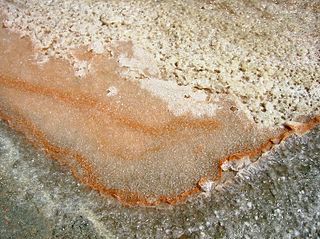 W
WFleur de sel or flor de sal is a salt that forms as a thin, delicate crust on the surface of seawater as it evaporates. Fleur de sel has been collected since ancient times, and was traditionally used as a purgative and salve. It is now used as a finishing salt to flavor and garnish food. The name comes from the flower-like patterns of crystals in the salt crust.
 W
WGarlic salt is a seasoned salt made of a mixture of dried, ground garlic and table salt with an anti-caking agent. In its most basic form it is made by combining 3 parts salt and 1 part dried garlic powder by volume, or 6 parts salt and 1 part garlic powder by weight.
 W
WTo take something with a "grain of salt" or "pinch of salt" is an English idiom that suggests to view something, specifically claims that may be misleading or unverified, with skepticism or to not interpret something literally.
 W
WHalite, commonly known as rock salt, is a type of salt, the mineral (natural) form of sodium chloride (NaCl). Halite forms isometric crystals. The mineral is typically colorless or white, but may also be light blue, dark blue, purple, pink, red, orange, yellow or gray depending on inclusion of other materials, impurities, and structural or isotopic abnormalities in the crystals. It commonly occurs with other evaporite deposit minerals such as several of the sulfates, halides, and borates. The name halite is derived from the Ancient Greek word for "salt", ἅλς (háls).
 W
WThe health effects of salt are the conditions associated with the consumption of either too much or too little salt. Salt is a mineral composed primarily of sodium chloride (NaCl) and is used in food for both preservation and flavor. Sodium ions are needed in small quantities by most living things, as are chloride ions. Salt is involved in regulating the water content of the body. The sodium ion itself is used for electrical signaling in the nervous system.
 W
WHimalayan salt is rock salt (halite) mined from the Punjab region of Pakistan. The salt, which often has a pinkish tint due to trace minerals, is primarily used as a food additive to replace refined table salt but is also used for cooking and food presentation, decorative lamps and spa treatments. The product is often promoted with groundless claims that it has health benefits.
 W
WIodised salt is table salt mixed with a minute amount of various salts of the element iodine. The ingestion of iodine prevents iodine deficiency. Worldwide, iodine deficiency affects about two billion people and is the leading preventable cause of intellectual and developmental disabilities. Deficiency also causes thyroid gland problems, including endemic goitre. In many countries, iodine deficiency is a major public health problem that can be cheaply addressed by purposely adding small amounts of iodine to the sodium chloride salt.
 W
WKala namak is a kiln-fired rock salt used in South Asia with a sulphurous, pungent smell. It is also known as "Himalayan black salt", Sulemani namak, bire noon, bit loona, bit lobon, kala loon, guma loon, or pada loon, and is manufactured from the salts mined in the regions surrounding the Himalayas.
 W
WKosher salt or kitchen salt is coarse edible salt without common additives such as iodine. Typically used in cooking and not at the table, it consists mainly of sodium chloride and may include anticaking agents.
 W
WKorean brining salt, also called Korean sea salt, is a variety of edible salt with a larger grain size compared to common kitchen salt. It is called gulgeun-sogeum or wang-sogeum in Korean. The salt is used mainly for salting napa cabbages when making kimchi. Because it is minimally processed, there are microorganisms present in the salt, which serve to help develop flavours in fermented foods.
 W
WKosher salt or kitchen salt is coarse edible salt without common additives such as iodine. Typically used in cooking and not at the table, it consists mainly of sodium chloride and may include anticaking agents.
 W
WLawry's Seasoned Salt is a seasoned salt widely used in the United States. Before its retail introduction in 1938, it was used exclusively by Lawry's The Prime Rib Restaurant in Beverly Hills, where the seasoning was created. The brand is now owned by McCormick & Company. Lawry's was the first seasoned salt to hit the market; seasoned salts are now said to outsell regular table salt in the United States.
 W
WA mineral lick is a place where animals can go to lick essential mineral nutrients from a deposit of salts and other minerals. Mineral licks can be naturally occurring or artificial. Natural licks are common, and they provide essential elements such as phosphorus and the biometals required in the springtime for bone, muscle and other growth in deer and other wildlife, such as moose, elephants, tapirs, cattle, woodchucks, domestic sheep, fox squirrels, mountain goats and porcupines. Such licks are especially important in ecosystems with poor general availability of nutrients. Harsh weather exposes salty mineral deposits that draw animals from miles away for a taste of needed nutrients. It is thought that certain fauna can detect calcium in salt licks.
 W
WMonosodium glutamate (MSG), also known as sodium glutamate, is the sodium salt of glutamic acid. MSG is found naturally in some foods including tomatoes and cheese. MSG is used in cooking as a flavor enhancer with an umami taste that intensifies the meaty, savory flavor of food, as naturally occurring glutamate does in foods such as stews and meat soups.
 W
WOnion powder is dehydrated, ground onion that is commonly used as a seasoning. It is a common ingredient in seasoned salt and spice mixes, such as beau monde seasoning. Some varieties are prepared using toasted onion. White, yellow and red onions may be used. Onion powder is a commercially prepared food product that has several culinary uses. Onion powder can also be homemade.
 W
WOriel Sea Salt is a variety of Irish sea salt.
 W
WSalt consumption has been extensively studied for its role in human physiology and impact on human health. Chronic, high intake of dietary salt consumption is associated with hypertension and cardiovascular disease, in addition to other adverse health outcomes. Major health and scientific organizations, such as the World Health Organization, US Centers for Disease Control and Prevention, and American Heart Association, have established high salt consumption as a major risk factor for cardiovascular diseases and stroke.
 W
WSalt and light are images used by Jesus in the Sermon on the Mount, one of the main teachings of Jesus on morality and discipleship. These images in Matthew 5:13, 14, 15 and 16
 W
WA salt cellar is an article of tableware for holding and dispensing salt. In British English, the term is normally used for what in North American English are called salt shakers. Salt cellars can be either lidded or open, and are found in a wide range of sizes, from large shared vessels to small individual dishes. Styles range from simple to ornate or whimsical, using materials including glass and ceramic, metals, ivory and wood, and plastic.
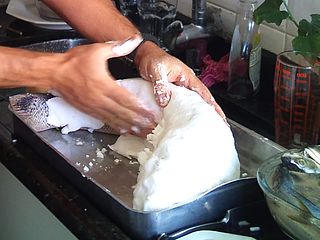 W
WA salt crust is a method of cooking by completely covering an ingredient such as fish, chicken or vegetables in salt before baking. The salt layer acts as insulation and helps cook the food in an even and gentle manner. After baking, the salt crust is cracked and discarded, revealing the moist and evenly cooked food.
 W
WSalt substitutes are low-sodium table salt alternatives marketed to circumvent the risk of high blood pressure and cardiovascular disease associated with a high intake of sodium chloride while maintaining a similar taste.
 W
WSalt-cured meat or salted meat is meat or fish preserved or cured with salt. Salting, either with dry salt or brine, was a common method of preserving meat until the middle of the 20th century, becoming less popular after the advent of refrigeration. It was frequently called "junk" or "salt horse". One early method of salt-curing meat was corning, or applying large, coarse pellets of salt, which were rubbed into the meat to keep it from spoiling and to preserve it. This term originates from Old English and references the large corns or grains of salt used. Corned beef retains this name, although it is typically brined today.
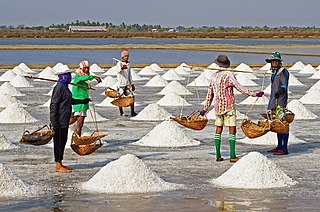 W
WSea salt is salt that is produced by the evaporation of seawater. It is used as a seasoning in foods, cooking, cosmetics and for preserving food. It is also called bay salt, solar salt, or simply salt. Like mined rock salt, production of sea salt has been dated to prehistoric times.
 W
WSeasoned salt is a blend of table salt, herbs, spices, other flavourings, and sometimes monosodium glutamate (MSG). It is sold in supermarkets and is commonly used in fish and chip shops and other take-away food shops. Seasoned salt is often the standard seasoning on foods such as chicken, french fries, deep-fried seafood, and potatoes.
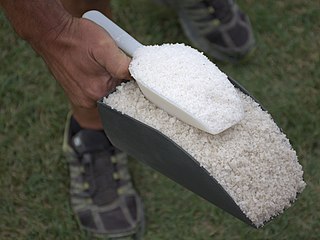 W
WSel gris is a coarse granular sea salt popularized by the French. Sel gris comes from the same solar evaporation salt pans as fleur de sel but is harvested differently; it is allowed to come into contact with the bottom of the salt pan before being raked, hence its gray color. Sel gris is coarser than fleur de sel but is also a moist salt, typically containing 13 percent residual moisture.
 W
WSmoked salt is an aromatic salt smoked with any number of select bark free woods for up to 14 days. The kind of wood used for smoking impacts the flavor, which can range from subtle to bold or even sweet. The most common choices are alder, apple wood, hickory, mesquite, and oak. Infused smoked salts like smoked bacon chipotle sea salt are very popular because of their dynamic flavor profiles.
 W
WSalt is a mineral composed primarily of sodium chloride (NaCl), a chemical compound belonging to the larger class of salts; salt in the form of a natural crystalline mineral is known as rock salt or halite. Salt is present in vast quantities in seawater. The open ocean has about 35 grams (1.2 oz) of solids per liter of sea water, a salinity of 3.5%.
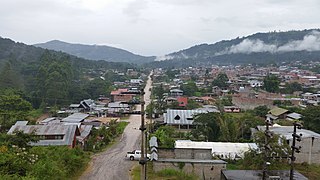 W
WVilla Rica District is one of eight districts of Oxapampa Province in Pasco Department, Peru. The district has an area of 896 square kilometres (346 sq mi) and a population of 18,673 in 2017. The capital of the district is the town of Villa Rica which had a population of 11,900 in 2017. The district is the location of the Cerro de la Sal or Salt Mountain, an important gathering place for indigenous people of the region and a center of Franciscan missionary activity in the 17th and 18th centuries. The town was founded in 1928 by settlers of German and Austrian origin from the town of Pozuzo.